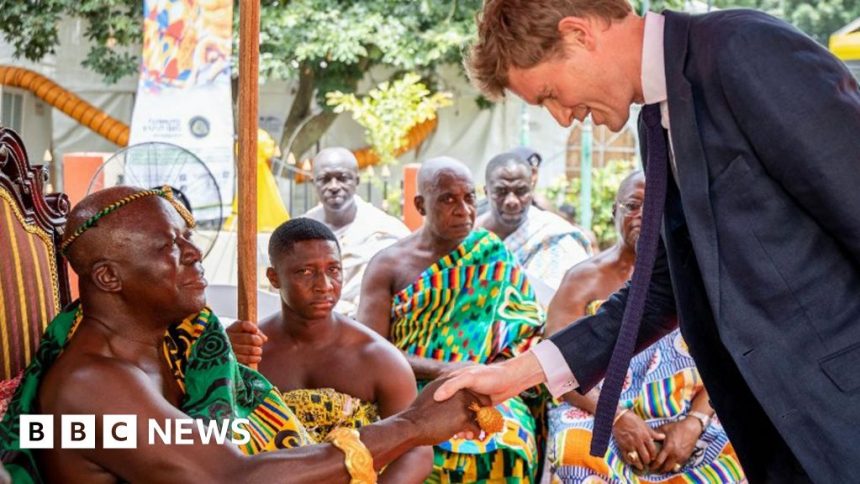Nii Kwate Owoo, a celebrated Ghanaian film-maker who was at the ceremony in Kumasi on 1 May, made his name in the 1970s with his documentary You Hide Me, which lambasts the British Museum for hoarding African treasures.
“An armed robber comes into your house, mows down your family and grabs your valuables, and comes back later and says: ‘OK, you’re making noises, I’ll give this back as a loan!’” Mr Owoo told me, deeply unimpressed by the British terms.
Mr Agyeman-Duah understands these emotions – his own great-grandfather was exiled by the British during the Anglo-Asante wars – but is confident the Asantehene chose the right path.
“We’ve been talking about this for 50 years, and nothing happened… if we couldn’t find a middle way, we’d have just continued with this stalemate,” he argues.
There are obvious similarities between the British pillaging of Kumasi and another notorious episode in West African colonial history – the sacking of the palace of the king, or Oba, in Benin City in 1897, in what is today Edo State, southern Nigeria.
That was when the British took the Benin Bronzes – thousands of brass castings and ivory carvings – which are at the forefront of the debate around looted artefacts in Western museums.
Nigeria has had some success in its campaign for the return of the bronzes.
In 2022 the German government announced the transfer of ownership of some 1,000 Benin Bronzes.
Germany’s Foreign Minister Annalena Baerbock flew to Nigeria’s capital, Abuja, and handed over 22 of the most spectacular objects to the Nigerian government.
She said it was “a step that was long overdue”.






